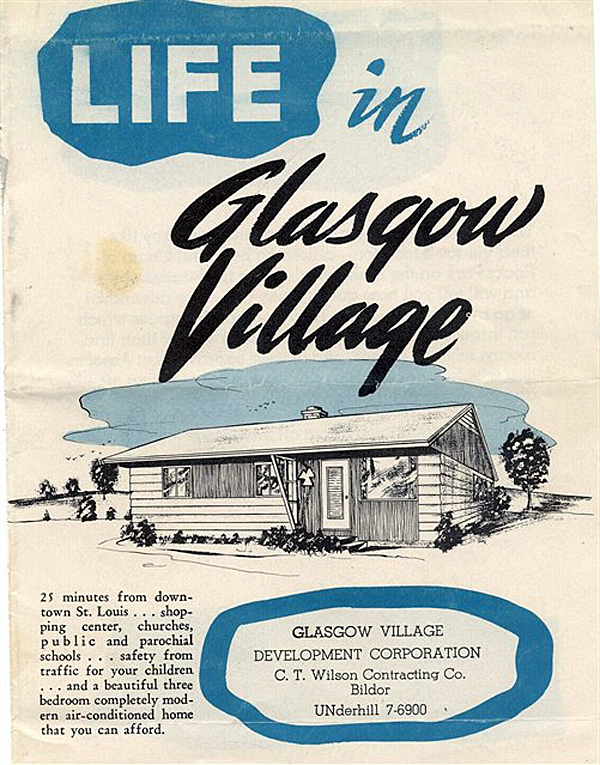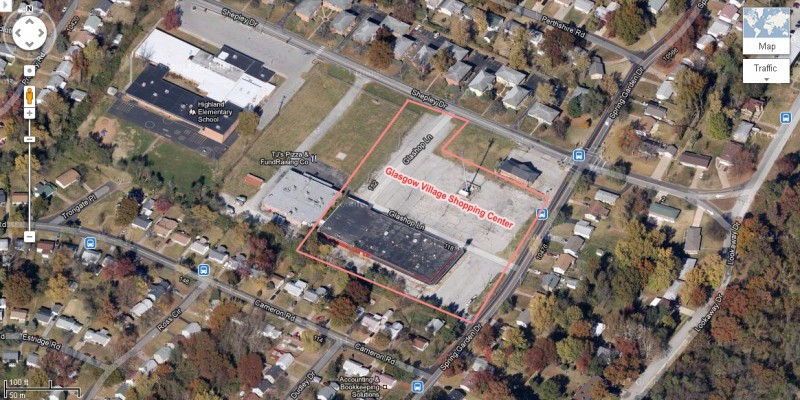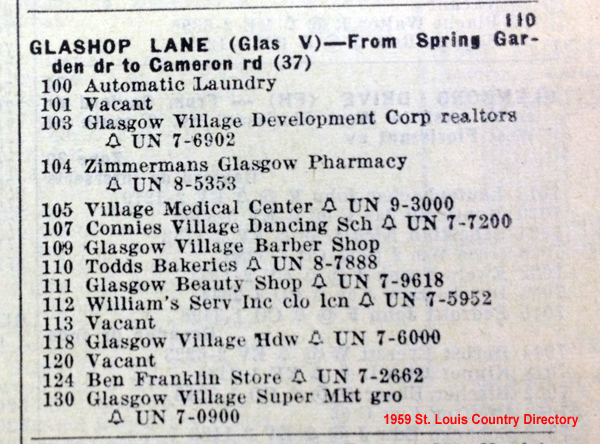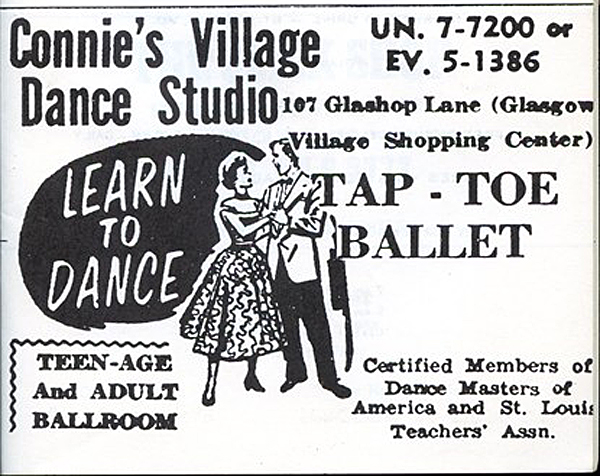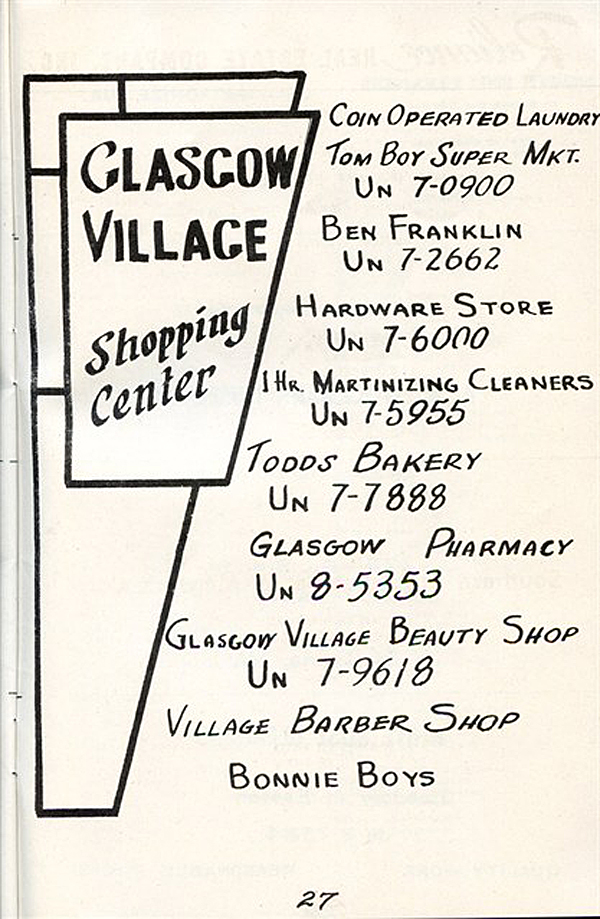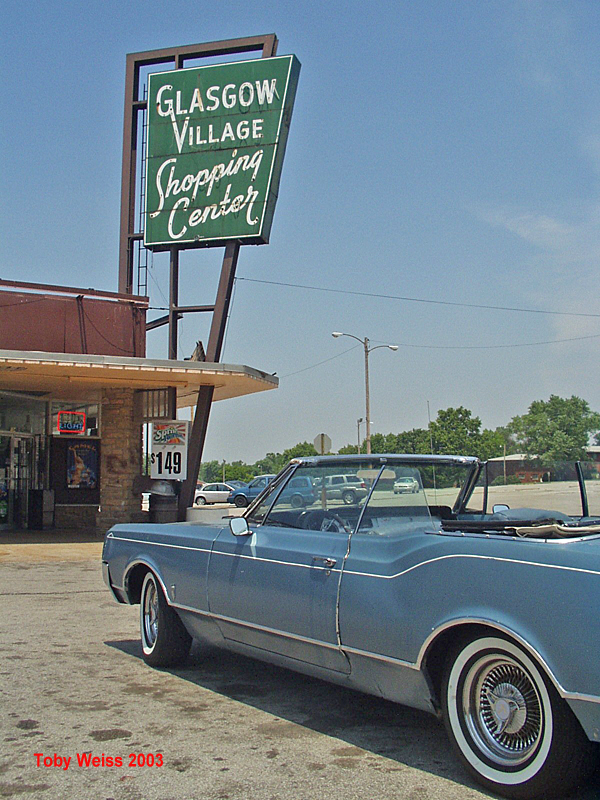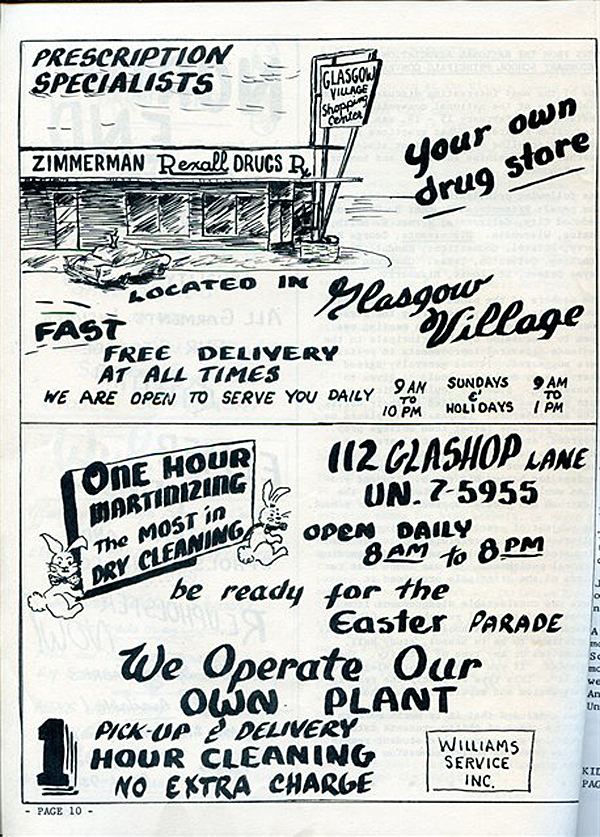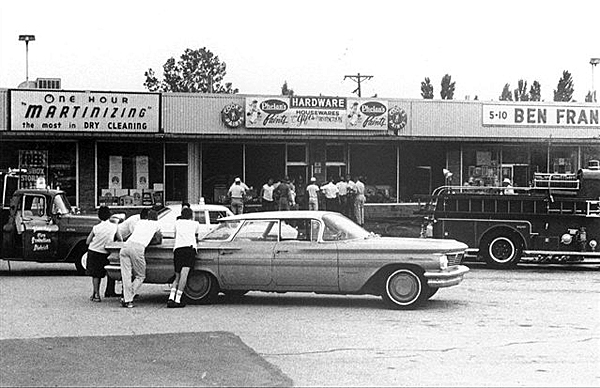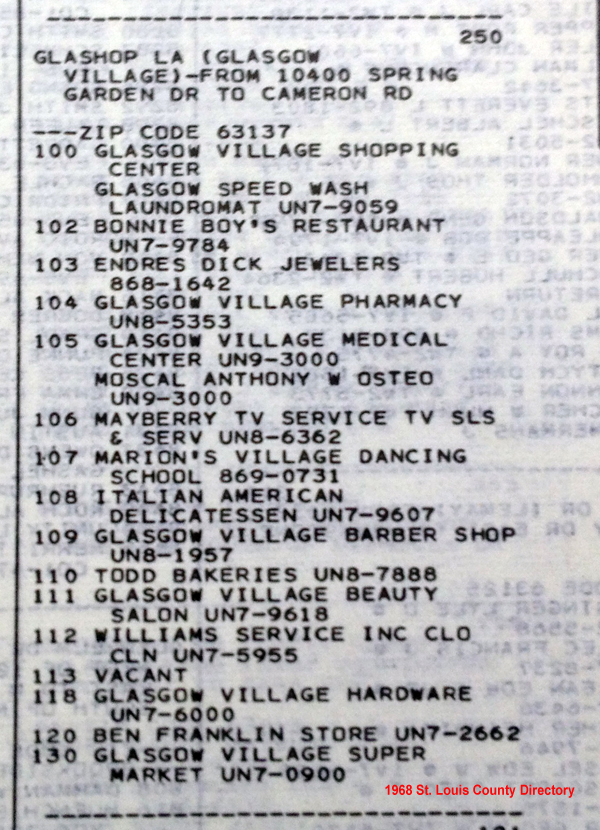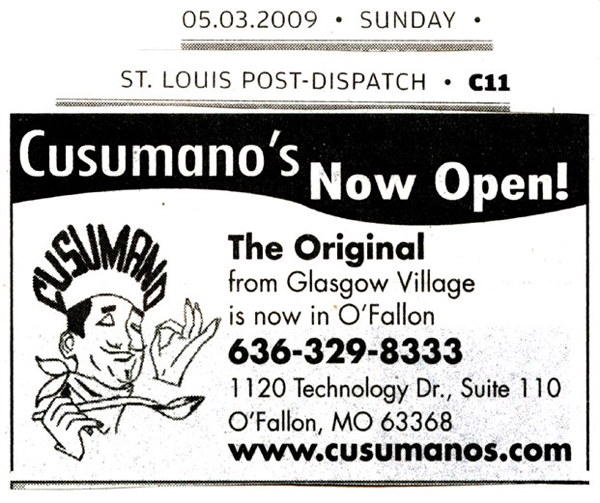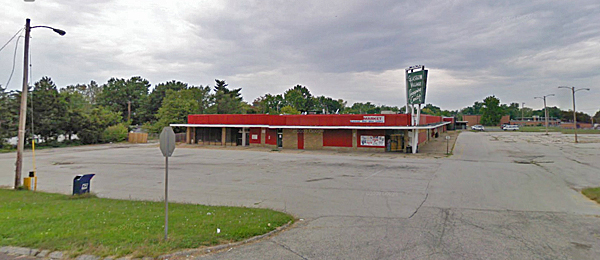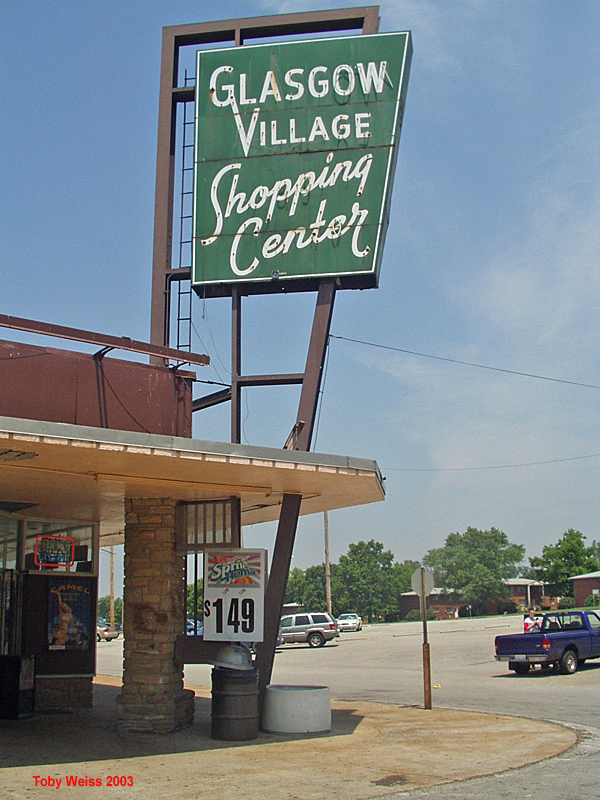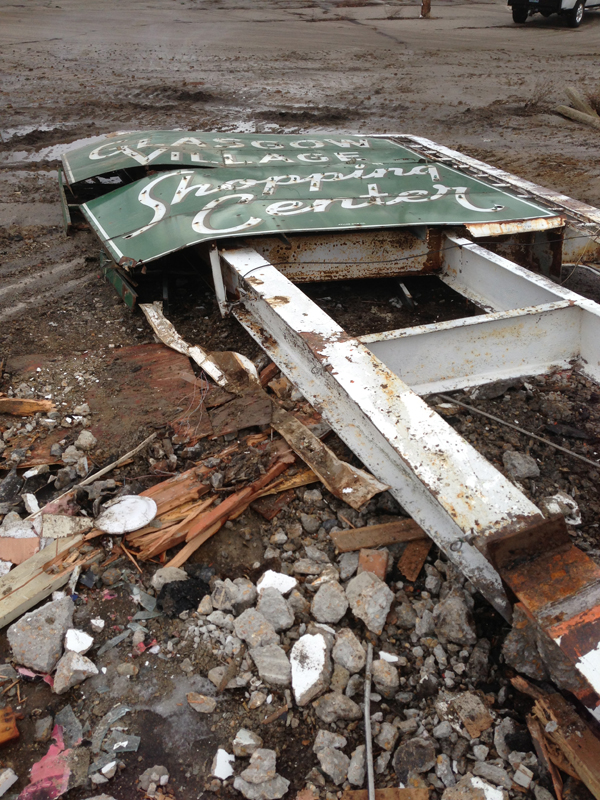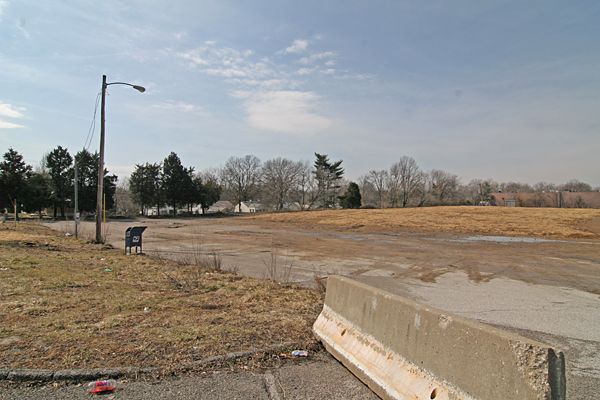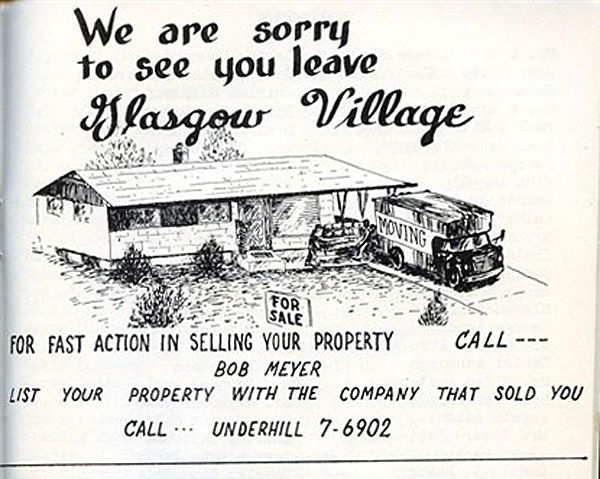Glasgow Village is a perfect example of an inner ring suburb that sprung up along the City of St. Louis border in the early 1950s. On this map, you’ll see that the last thread of the City boundary (Ward 2) hugs Riverview Drive. When they began developing this land along the Mississippi River bluffs, St. Louis City fire and police personnel were eager to have the homes being built within city boundaries to meet residency requirements. Stories are that they would offer more than the asking price just to have them.
Concurrently, the adjacent County land that is Glasgow Village (early history here) was also being developed. St. Louis County directories show only 3 streets in existence in Glasgow Village in 1951. By 1955, it was complete and filled with homes much like this.
Adhering to the “village” in its name, the new community needed a central commerce gathering place, and construction of Glasgow Village Shopping Center (shown in the map above) began in 1957. There were spots for 15 businesses, including the backside of the building which was accessed on foot.
The 1959 County directory (above) lists the original tenants. Many of these shops regularly contributed to the various Glasgow Village newsletters released by the trustees and the local schools.
Shops like Connie’s Village Dance Studio (which became Marion’s Village Dancing School by 1963) contributed to the close-knit village atmosphere that still prevails in the hearts of GV ex-pats, who regularly converse and contribute at Glasgow Village Friends.
The towering, angular sign at the corner of the shopping center long served as the striking symbol of the village.
And it still stood tall and proud in 2003 when I took the photo above. By then, the majority of the center was vacant, with the liquor store at 104 Glashop Lane (isn’t that a great street name?) pulling in a brisk business. But even in its reduced state, it was easy to understand how vital this place once was to the town.
By its siting, GV is rather remote, which was a great selling point during the suburban migration of the early 1950s. The shopping center became an instant “downtown,” taking care of just about all of the residents’ needs, and all within walking distance.
104 started off as Zimmerman’s Glasgow Pharmacy, part of the Rexall dynasty. And the dry cleaner’s shown above made the news in 1968 when it caught fire.
And just like any small town, the people who once lived there can pinpoint when it happened based on their personal memories.
The Italian American Delicatessen at 108 (above) morphed into Cusumano’s Village Inn by 1974.
And that storied pizza place lives on in O’Fallon, MO. Exactly when they left the shopping center is best left to the memories of the GV Friends, and hopefully they will chime in with comments here. Just as they recently shared information that some of the Cusumano family showed up to watch the demolition of the center. Which is a testament to how much this place meant to everyone who lived there.
Decline
The retail side of Glasgow Village was in drowning mode by 2003. By 2011, the St. Louis Post-Dispatch was detailing the foreclosure woes of the town. They accompanied it with an editorial piece that tries to pinpoint why inner ring suburbs are having a tough time and (with quotes from yours truly on) how to solve it.
The St. Louis racial divide as it pertains to real estate has been deeply documented, with Mapping Decline being the most exhaustive resource for information on the whys and hows of White Flight and Redlining. Even though the federal government stepped in to ban the practice, the mentality still seems ingrained, transferring from North St. Louis City to North County, and requiring more recent intervention.
But there is never just one reason for decline, so lets look beyond St. Louis’ racial tensions. Along with rapidly advancing conspicuous consumption from the 1980s to mid-2000s that led to ever-bigger homes in far-flung locales, I think there’s topography at play in North St. Louis County.
Starting with the first settlers in 1764, St. Louis development always favored the southern half before the northern half for one very logical reason: the north is very hilly because the ancient confluence of the Missouri and Mississippi Rivers created mountainous mass. When it came to build and all you had were shovels and cattle-driven plows to move earth, you’d naturally choose the flattest terrains first.
This hilly topography later limited placement of interstates during the 1950s – 60s, and the rivers are a definitive end to the area. All of these factors combine to give far North St. Louis County a remoteness that does not exist in West and South County, where they can – and do – keep expanding. Look to the fate of Jamestown Mall to understand why through traffic is crucial for retail. It’s also crucial for keeping neighborhoods lively. The more pocketed communities tend to stagnate, and Glasgow Village is, sadly, a perfect example of this.
The iconic sign was a poignant focal point on February 25, 2013 when St. Louis County Executive Charlie Dooley held a press conference in front of the cranes in front of Glasgow Village Shopping Center. He announced an increased budget to demolish an initial 41 buildings in North County, mostly fire-damaged and vacant homes that had become nuisance properties. GV residents verified that the shopping center had become an insurmountable problem for their community. And so they demolished Glasgow Village Shopping Center.
The County plans to take down more than 100 buildings this year. Glasgow Village Shopping Center was the perfect way to make a dramatic media splash about the “aggressive program.” I have yet to see posted a list of all the properties due for demolition. Even though Doolie stated that “we recognize that we cannot demolish our way to neighborhood stabilization,” a lack of information on what buildings are coming down is troubling. Parts of the City of St. Louis have yet to recover from aggressive demolition during the mid-century Urban Renewal. I hope that the County does not repeat these errors with a misguided Suburban Renewal program.
There was interest in saving the Glasgow Village Shopping Center sign because it is such a powerful symbol of the community. But the demolition company did not have the budget to take it down in a manner that preserves it. Reports came in that once it hit the ground, it was dragged for a bit which damaged the porcelain face of the signs.
The Glasgow Village trustees did cart off one side of the sign that was relatively unscathed. I love the sentimentality that compelled them to save a last remnant, and am keen to know what they plan to do with sign.
There was nothing but torn concrete and straw by the time the photo above was taken on March 9, 2013. Too long a physical reminder of better days, the shopping center is now officially a memory.
Does anyone know of any solid plans for redeveloping this site?
Creating something new and vital here should be as important of a priority as erasing the problems. I understand why demolishing buildings gets media attention, but I hope Doolie and his team will continue to engage in public dialogue about their plans and progress. North County deserves a fighting chance for renaissance.

